Students take a self-driving Lincoln out for a spin
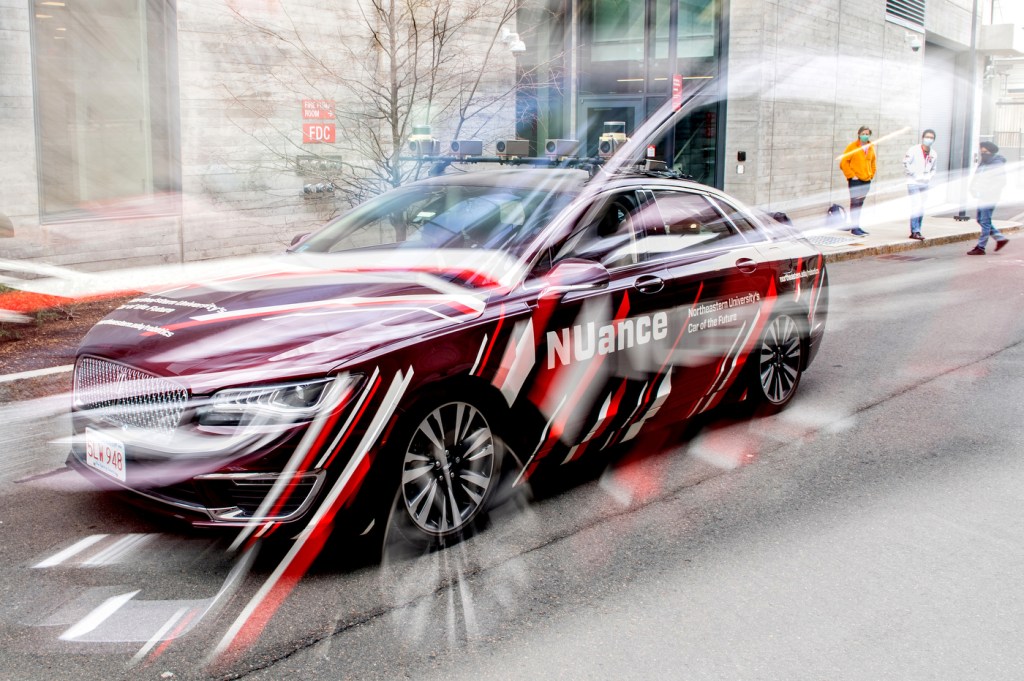
At first glance it looks like any other burgundy four-door sedan on the street. That is, until you get closer and notice the rooftop-mounted cameras and sensors, and the white decals on the hood and doors that say “Northeastern University’s Car of the Future.”
The 2016 Lincoln MKZ with black floor mats and beige leather seats is a laboratory on wheels for electrical and computer engineering professor Hanumant Singh’s autonomous field-robotics class.
The gas/electric hybrid has been used regularly in the past to teach students, but it was making its first trip this semester, explains Jagatpreet Singh Nir, a third-year engineering doctoral student. He was preparing the car for the pending outing while it was parked in a side alley next to the Interdisciplinary Science and Engineering Complex.
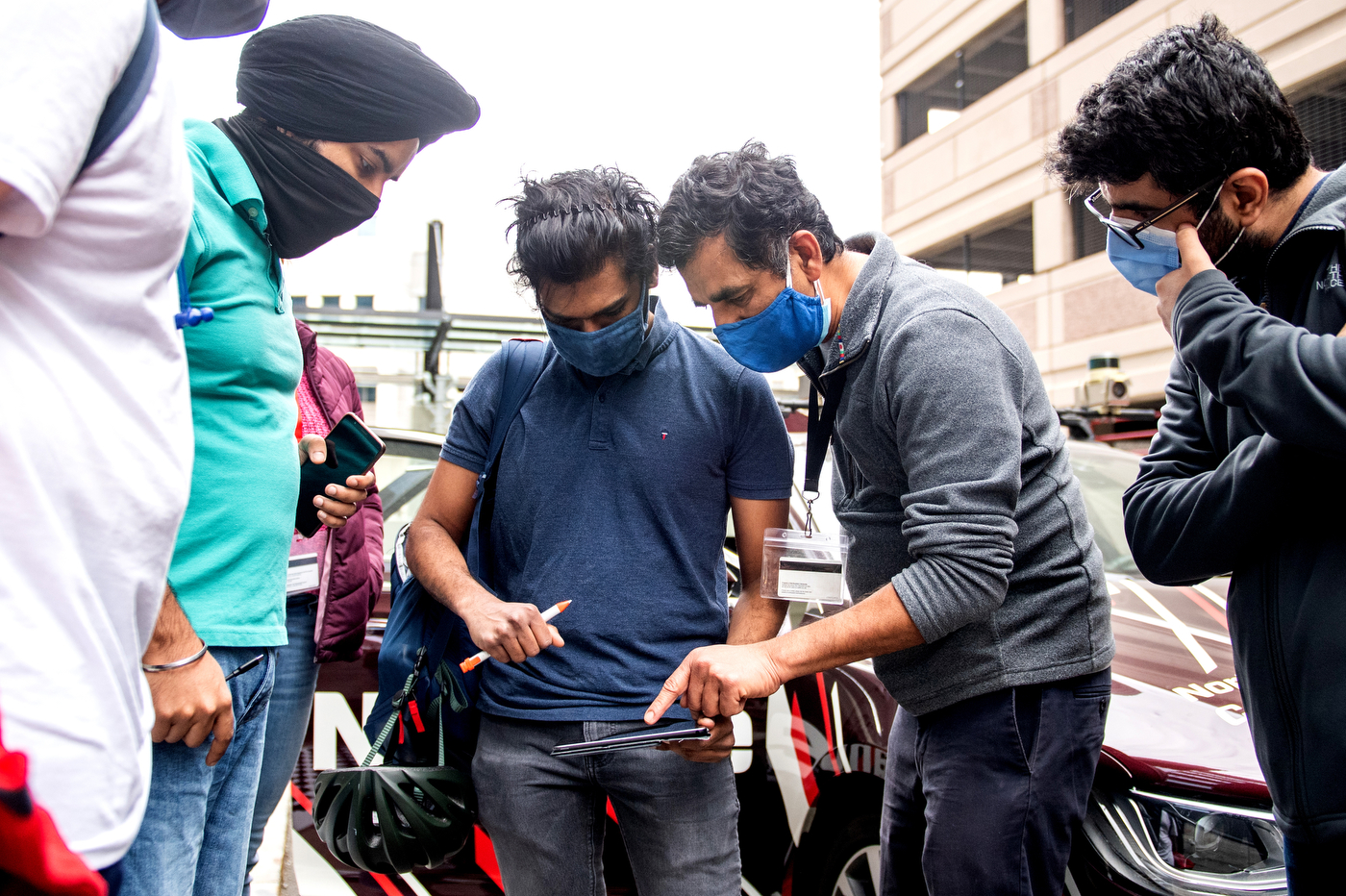
Professor Hanumant Singh leads his autonomous field robotics class. Photo by Matthew Modoono/Northeastern University
“The whole point to understanding navigation is to determine where we are,” Nir says. “A big question in robotics is, ‘Where are we with respect to the world and what do things around us look like?’ ’’
He explains that the car’s five cameras pick up anomalies such as glass storefront windows that could distort data. Some software programs “assume that the world is static and no one is moving around, but in reality that is not what happens,” he explains.
Nir and a handful of students plotted out a loop along Columbus Avenue, Massachusetts Avenue, and other nearby roads to observe multiple data feeds as they pour in while cameras and sensors attached to a luggage rack scan the surrounding areas for situational awareness.
On top of the Lincoln’s roof was a bar code sticker that said “Property of Northeastern University” and thick bands of insulated wires snaked along the sides of the roof and into a large computer tower in the trunk. Lights blinked on a nearby five-port gigabit switch used to connect devices to a local area network.



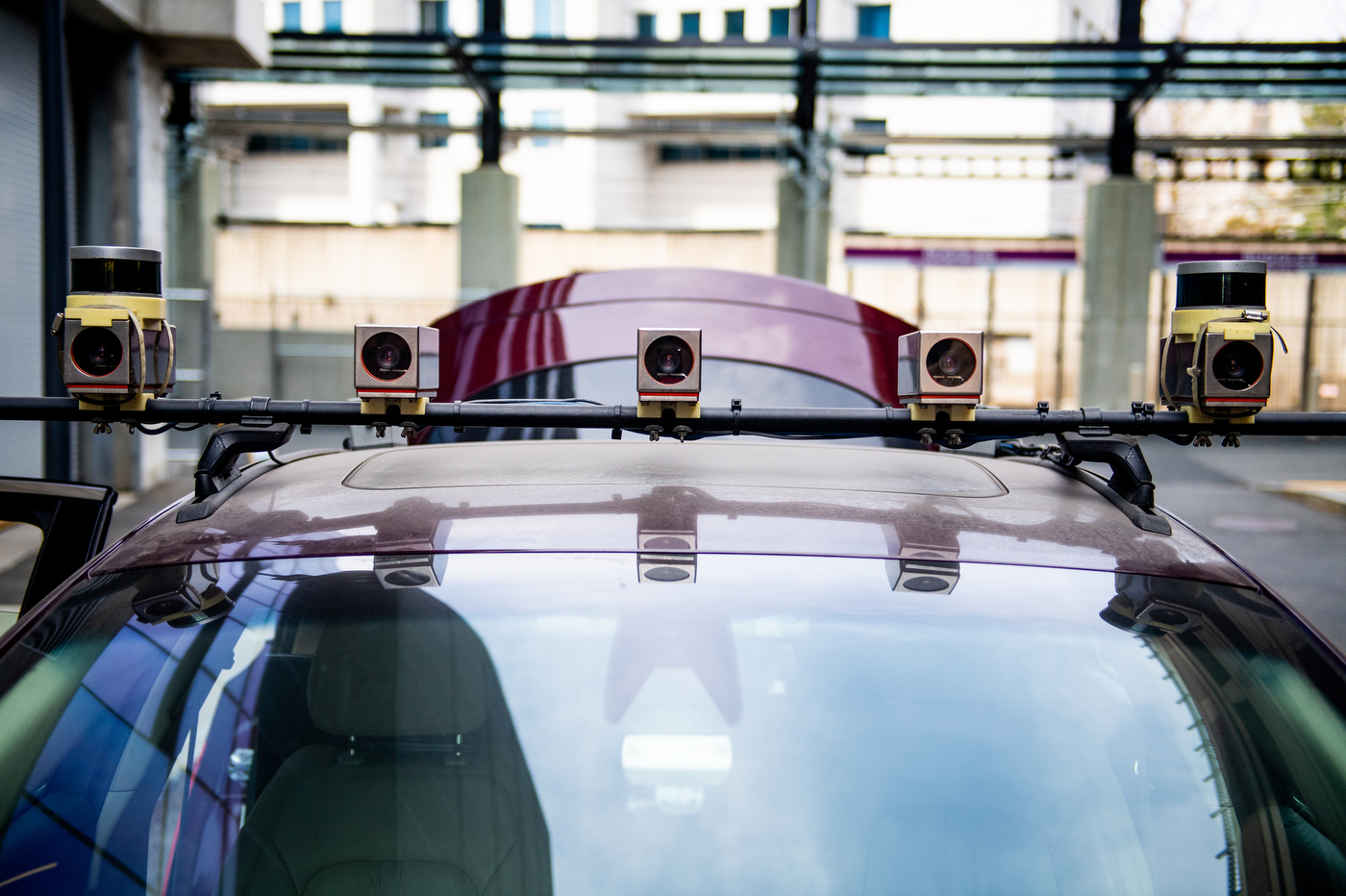
The interior had the typical creature comforts found in most cars, including a switch for heated seats, a radio/CD player, and temperature controls. A white toll transponder was affixed to the windshield. Outside, on the right rear quarter panel, the words “northeastern.edu/robotics” were spelled out in white decals.
A computer monitor mounted on the back of the front passenger seat serves as an interface. Watching the screen from the back seat was Pushyami Kaveti, a doctoral computer science student at Northeastern. Her research focuses on how to make robotics work seamlessly in real-world environments.
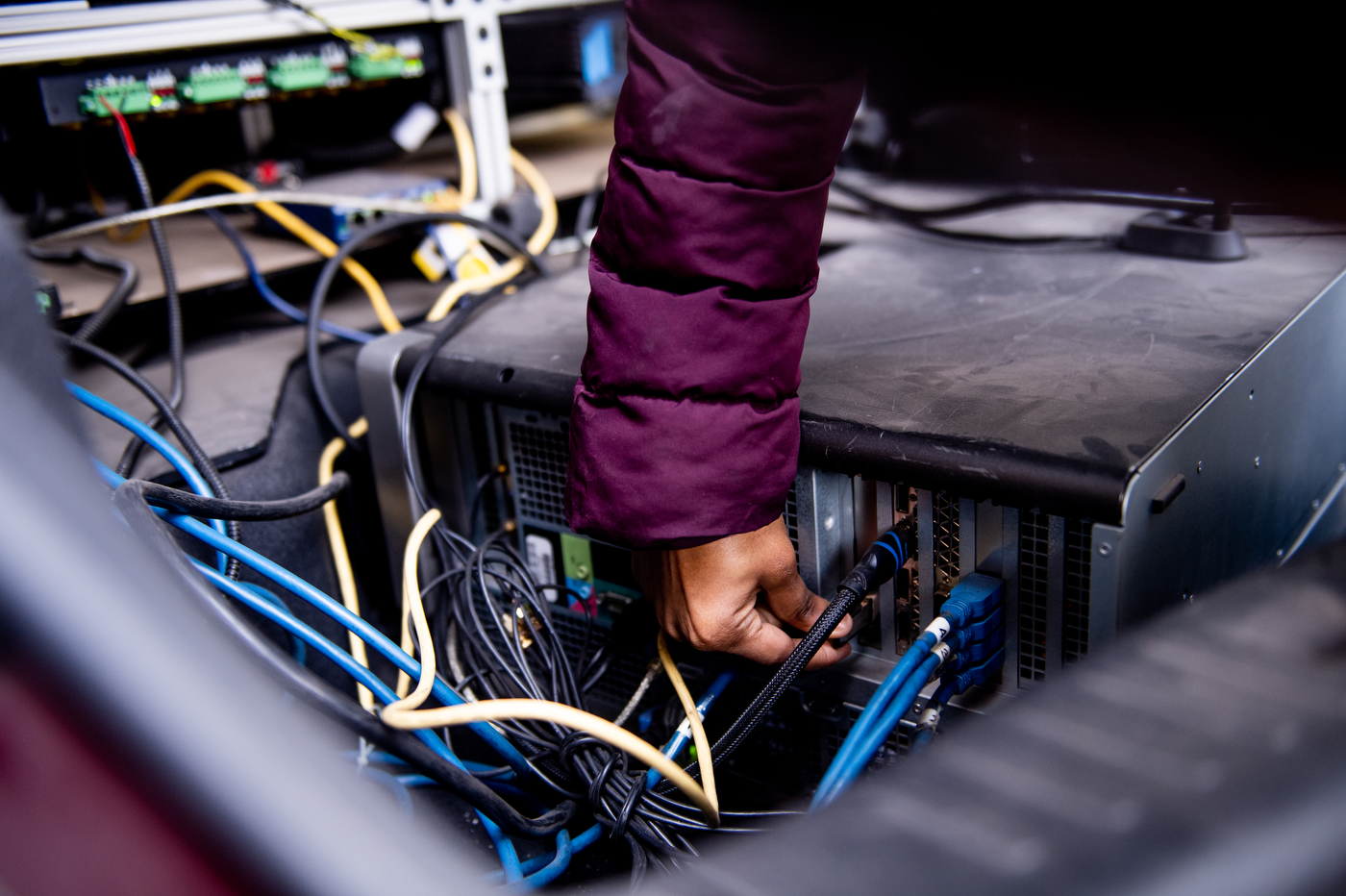

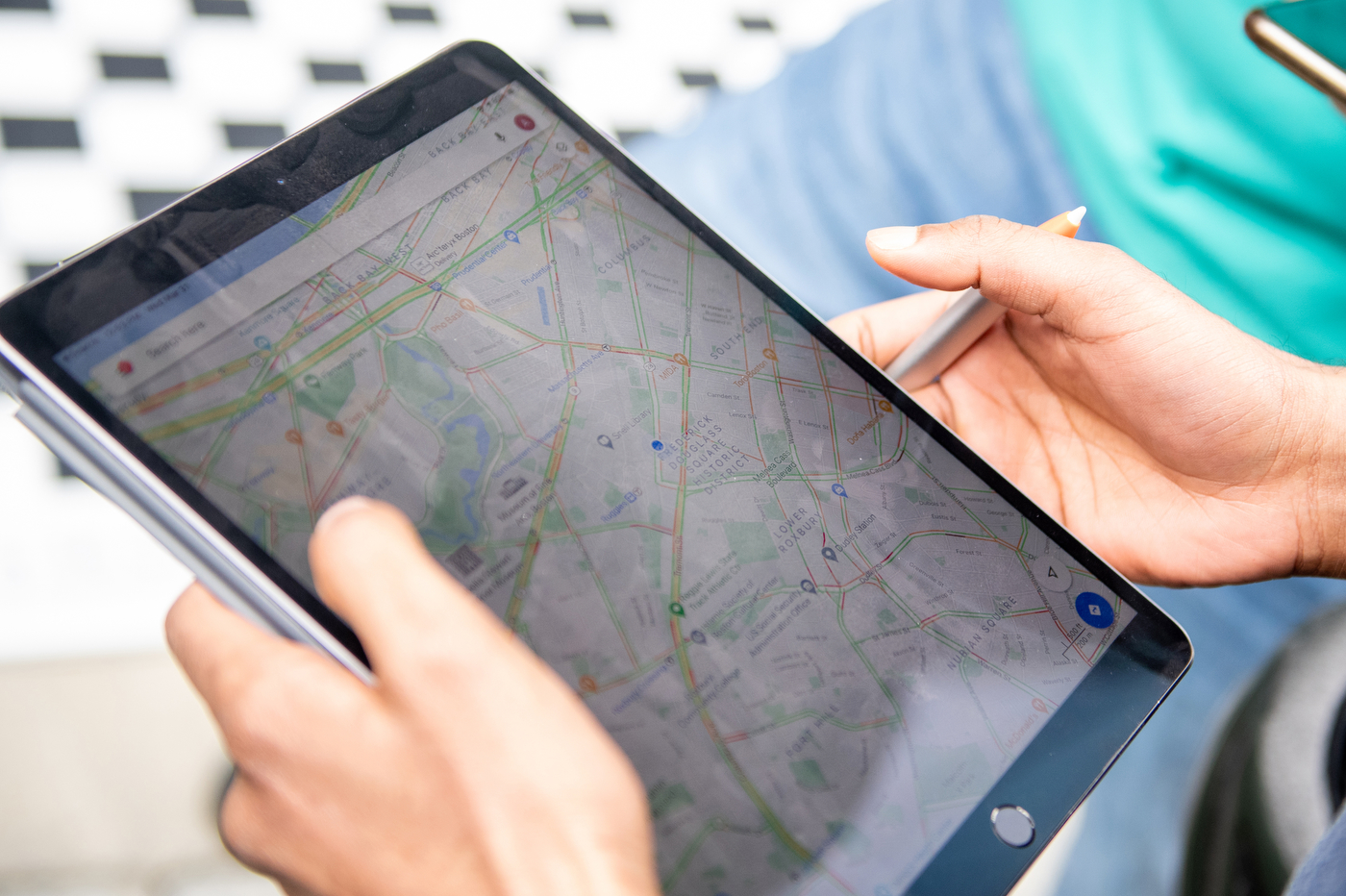
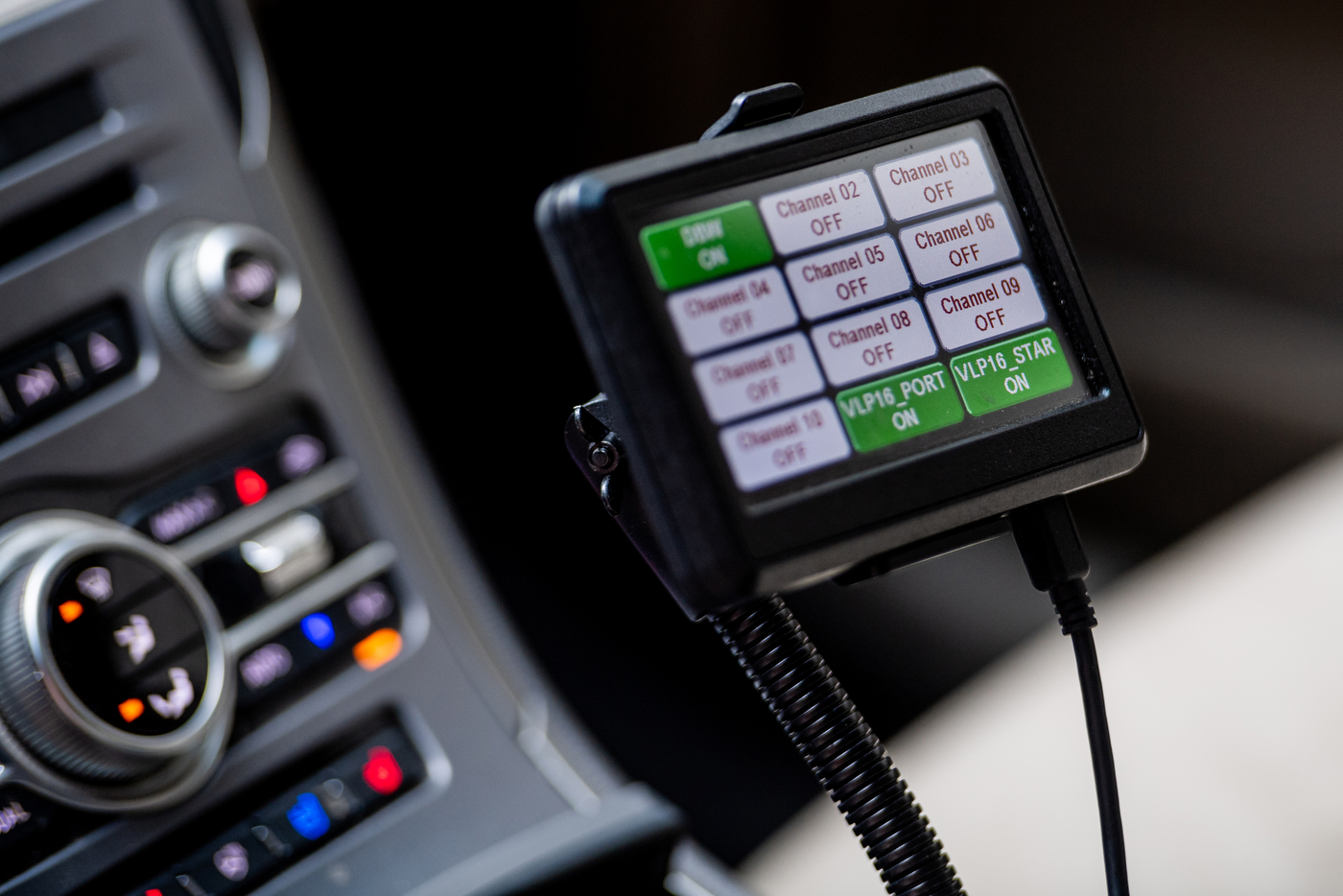
The car is not entirely self-driven—for safety reasons. For this particular outing with students the Lincoln is going to be steered by a human as a precaution, but it could be operated by a hand-held video game controller.
“ [We have] somebody sitting in the driver’s seat so that if something goes wrong, you can still use the brakes to override the system,” Kaveti says. The controller also handles acceleration and braking.
Kaveti and Nir will focus on the students’ safety during the experiential lab experiment. The graduate students want the class to concentrate on the bigger picture.
“We want them to understand what goes into making a system like this,” Kaveti says. “And then they’re going to use it to run some models and basically do their projects based on that data.”
For media inquiries, please contact media@northeastern.edu.





